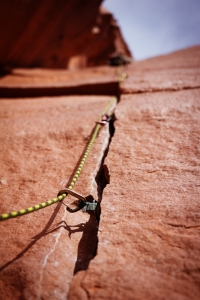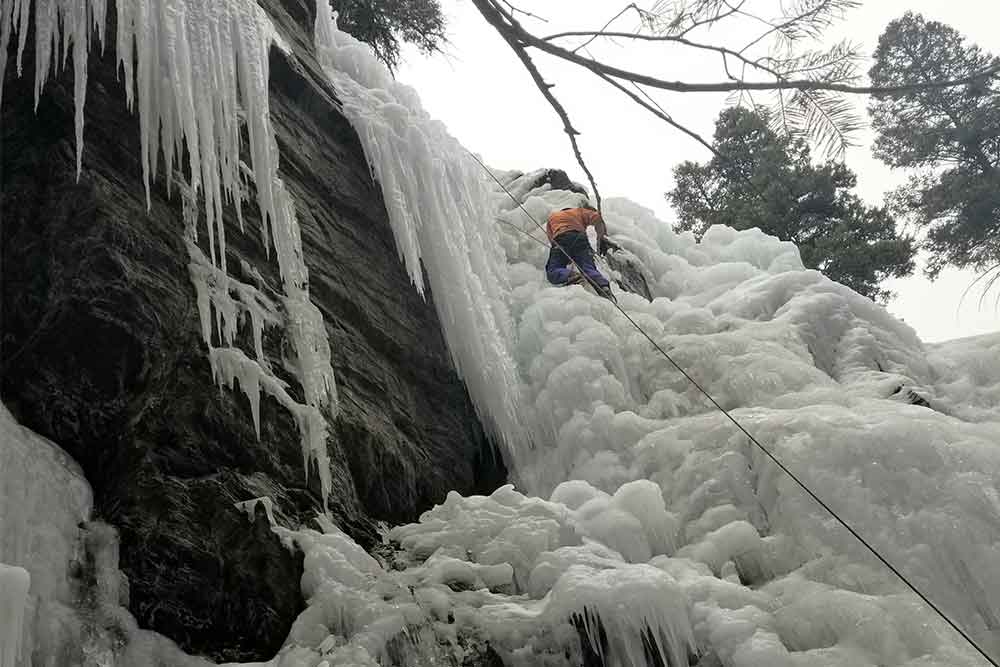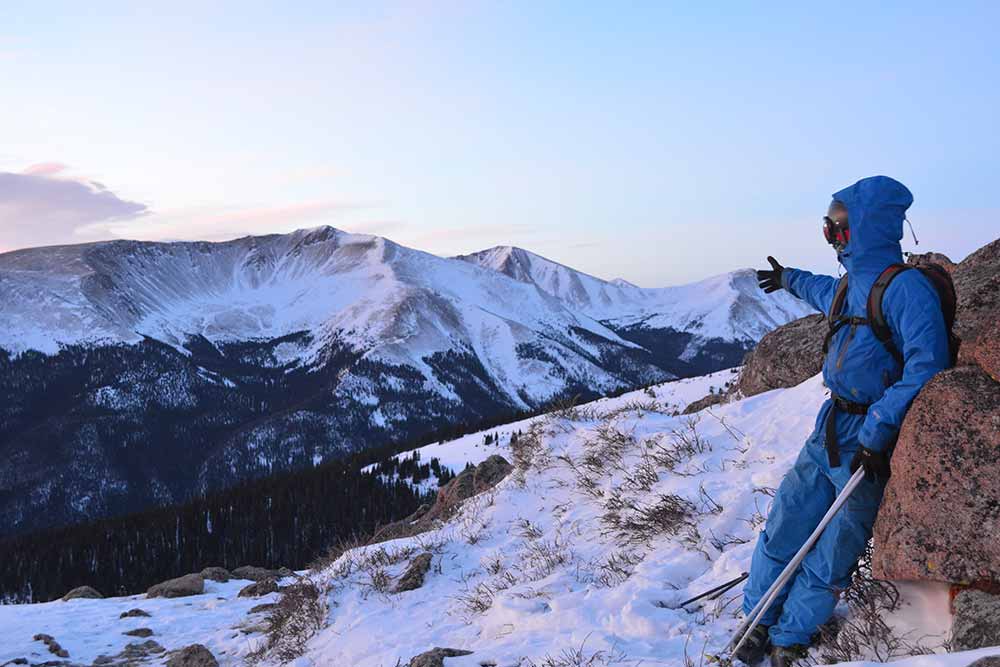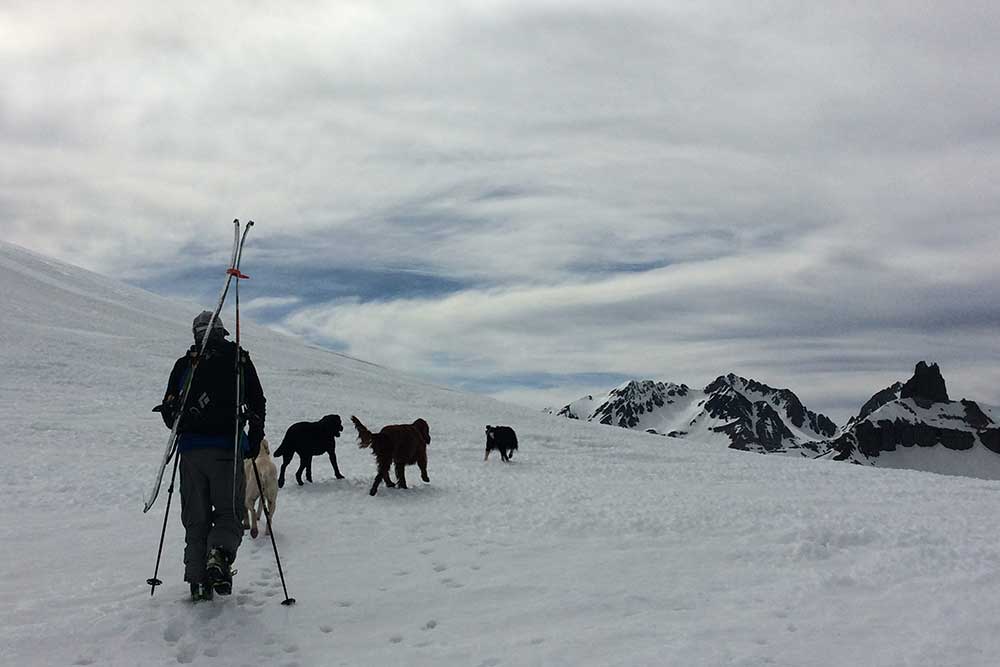“Creekin’” – An Intro to Crack Climbing

Hank Shell
 “Creekin’” – An Intro to Crack Climbing
“Creekin’” – An Intro to Crack Climbing
The Canyonlands of Southeastern Utah have long captivated the imaginations of those fortunate enough to visit. The Martian-like geography, a vast system of tiered canyons and sheer sandstone walls roiling upward into towering mesas, can seem like a barren wasteland to those gazing down from the canyon walls. The late author Edward Abbey called it “the most weird, wonderful, magical place on earth.” Abbey also described it as a land of paradox, and so it is.
While the throngs of tourists lining the rims of Canyonlands National Park may see little more than a sea of empty space plunging into the depths of maze-like canyons, there’s actually quite a bit happening deep in the abyss. Indian Creek, a deep canyon system just to the east of the park’s Needles District, is an imperceptible pin scar in the view from the park’s Grand View Point. But from fall to spring, when temperatures are bearable, it fills with adventurers seeking some of the best, and hardest, crack climbing in the world.
The Creek
It was a moonless, starwild night the first time I rolled down the dusty county road leading into the belly of “The Creek,” as it’s known among climbers. Traveling with two friends from Winter Park, Colo., we’d rendezvoused with three more climbers in the desert town of Moab, Utah, around dusk. After filling our water tanks and stocking up on food and firewood, our caravan struck out on U.S. Highway 191 South. A fifty-minute drive brought us to Utah State Highway 211, where we swung right to make our descent into the basin. Another forty-five minutes of winding highway, and we were at the head of one of the many digitate roads that course from the center of the basin up to the canyon walls.
This road in particular, if it could really be called a road, was so washed out and pitted as to seem nearly impassable in parts. Though only a couple of miles long, it was twenty minutes before we arrived at our campsite, the acrid smell of burnt clutch still hanging in our nostrils. Tired but excited, we quickly settled into our sleeping bags, gazing up at the imposing shadows of the canyon walls surrounding us.
Related Article: Beat Back the Fall Doldrums with Bouldering
Crack climbing – a primer
The vertiginous walls of Wingate sandstone that enclose Indian Creek are streaked with cracks. And, there are lots and lots of them. While large bolts are typically found at the top of all established routes in Indian Creek, climbers use tools like camming devices and specially shaped pieces of metal, collectively called pieces of protection or “pro,” to protect themselves as they ascend. The pieces are stuck into the crack, either actively flaring to grip the sides or passively wedging into constrictions to provide a secure, though often terrifying, anchor point that the climber can then pass the rope through. To actually climb the crack, climbers will jam and torque just about any appendage, from fingers to elbows, into the crack, using them like corporeal pieces of protection to haul themselves up. Most of these moves are intuitively named – finger jams, hand jams, fist jams, etc.
Getting started
Most climbing gyms have at least one crack dedicated to practicing this type of climbing. If your local gym doesn’t, or if you don’t have a local climbing gym, you can build your own crack for training purposes. Most bouldering areas also host some cracks. Once you’ve found, or made, a good splitter, try placing your hands in the crack. By contorting your hands, you’ll feel how expanding them in various ways applies pressure to the sides of the crack, giving you a firm purchase from which to ascend. Hand jams are the easiest crack climbing technique for beginners.
To perform a hand jam, find a crack that’s a little wider than your hand when flattened in a “salute” position. Insert your hand vertically into the crack, thumb up, and try tucking your thumb into your palm. You’ll feel the pressure exerted on the palm and back of your hand. For cracks that are more or less vertical, you’ll primarily use the “thumbs up” hand jam, though as your climbing advances to more varied cracks, you can experiment with “thumbs down,” or inverted, hand jams.
Sizing up
Guidebooks are imperative for crack climbing. These troves of knowledge, usually available at any outdoor store near your climbing destination, tell you the location, name and difficulty of most routes in a given climbing area. For crack climbing areas specifically, route descriptions will often include terms like “hands,” “thin hands,” “fingers,” “fists,” and “off-width” to describe the width of the crack. Most of these are self-explanatory. However, the off-width can be a bit confusing for a beginner. This term describes cracks that are too wide for a single fist, requiring special techniques like the “chicken wing,” “fist stacking,” and “chimneying.” We’ll talk more about off-width climbing in a subsequent article, as it tends to be a more advanced and grueling type of climbing. Gear-manufacturer Wild Country has a great series of online videos about crack climbing techniques.
Taping up
As I learned on that first trip to Indian Creek, crack climbing can be pretty painful. I had forgotten to pack a roll of athletic tape – a must for climbing in The Creek. My hands are still scarred from that first day of climbing without a tape glove. Luckily, a fellow climber took pity on my bloody hands and offered me a roll of his own.
Crack climbing on igneous rock, like granite, or metamorphic rock, like gneiss, can often be done without a tape glove, though sedimentary sandstone takes a predictable toll on the skin. Making a tape glove is fairly simple. Most outdoor stores that carry climbing equipment will sell athletic, or coach’s, tape. Otherwise, pick some up at your local pharmacy. The brand of tape you purchase also makes a difference – I prefer Mueller Eurotape or Johnson & Johnson Athletic Tape.
If you go
Indian Creek can be a bit intimidating for a nascent crack climber. Furthermore, leading routes in The Creek is pretty much out of the question for inexperienced climbers. Luckily, climbers are often friendly. Also, it’s easy to find more experienced climbers to lead routes that you can do. Alternatively, you could “top rope.” This means to climb with the rope passing securely through the top anchors. The website Mountain Project offers route information for most climbing areas as well as forums where you can seek a partner for your climbing trip. In subsequent visits to The Creek, I’ve always met personable climbers willing to scale a route with me – all you have to do is ask.
Traveling to Indian Creek for a multi-day climbing trip? Be sure to fill up a large water container in Moab before heading south. Gear Heads, an outdoor store, offers free water, tape and an array of climbing gear. Pagan Mountaineering, also in Moab, is another good retailer for climbing gear. The Bureau of Land Management manages the climbing areas in Indian Creek, and camping is free. Some areas may require a 4×4 vehicle to reach; consult David Bloom’s “Indian Creek: A Climbing Guide,” available at both afore-mentioned retailers, for more information about the area and routes.
You Might Like:
















